Associated Dermatology Helena is proud to offer the non-surgical, gold-standard treatment for non-melanoma skin cancer

If you suspect that you have skin cancer or have recently been diagnosed and were told you need treatment, schedule an appointment with us today.
We offer GentleCure (Image-Guided SRT)—the surgery-free, gold-standard treatment for skin cancer.
On your first visit, we will review your pathology report, discuss your treatment goals, and work with you to determine the treatment option that best meets your needs
Want to cure your skin cancer without surgery?
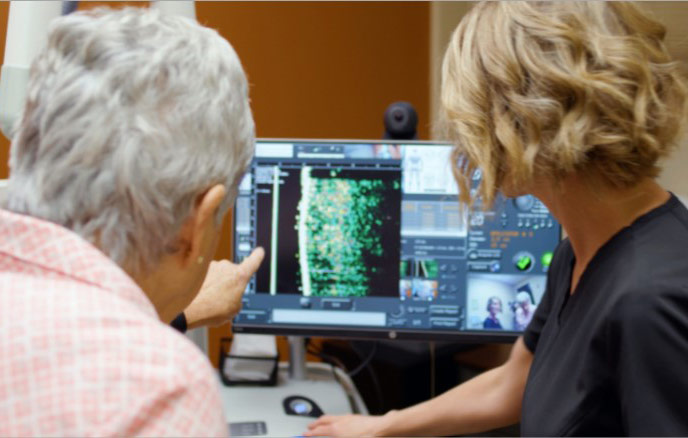
GentleCure is a gentle, surgery-free treatment that is safe and has a 99%+ cure rate in basal and squamous cell skin cancers. Treatment is done right in the dermatology office over the course of a few weeks using an advanced Image- Guided SRT machine. It is the only skin cancer treatment with ultra-sound imaging that lets you see the cancer
on the screen and review the progress made throughout the course of treatment until there are no visible signs of cancer.
If you suspect that you have skin cancer or have recently been diagnosed and were told you need treatment, schedule an appointment with us today.
We offer GentleCure (Image-Guided SRT)—the surgery-free, gold-standard treatment for skin cancer. On your first visit, we will review your pathology report, discuss your treatment goals, and work with you to determine the treatment option that best meets your needs.
Associated Dermatology Helena is proud to offer the non-surgical, gold-standard treatment for nonmelanoma skin cancer
See what to expect with treatment
GentleCure (Image-Guided SRT) is designed to treat skin cancer without the discomfort and cosmetic issues often
associated with surgery. There is no cutting, surgical scarring, or need for reconstructive surgery, and you can
maintain your normal daily activities throughout treatment.
At each treatment session, you will sit in a chair and ultrasound gel will be applied to the
site of the cancer. Using an imaging wand, we will look at a detailed image of your
cancer on screen. You can see the image yourself from the comfort of the chair. We will
use that image to measure the size and shape of the tumor, calculate the precise dose of
treatment, and define the treatment area.
Each treatment session takes about 15 minutes from the time you walk in the door to
when you leave the office. You will come back several times a week for short treatment
sessions, and in 4-to-7 weeks, treatment will be complete.
What is IG-SRT? - Advanced Dermatology
Learn more about the treatment experience and what to expect with GentleCure (Image-Guided SRT).
More than 66,000 patients have been successfully treated with GentleCure (Image-Guided SRT)
Patients report being satisfied with GentleCure (Image-Guided SRT). In a survey of more than 12,000 patients who completed treatment, 99.9% reported being happy with their treatment decision and said they would recommend GentleCure (Image-Guided SRT) to others.
GentleCure (Image-Guided SRT) has a proven track record that is backed by science and clinical research
At Associated Dermatology Helena, our team of dermatologists reviewed the published research and here is what we found:
In 2021, chart reviews were conducted for 1632 patients who had Image-Guided SRT to treat one or more early-stage basal or squamous cell skin cancers. Of those patients, 2917 skin cancers in total were treated. The results showed a 99.3% cure rate with Image-Guided SRT, which we believe to be equal to or better than Mohs surgery.
Why we chose to offer GentleCure (Image-Guided SRT)
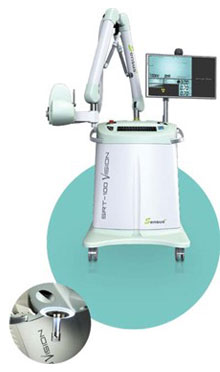
There are several different radiation-based treatments available for skin cancer. But the safety, cure rates, and cosmetic outcomes vary based on the treatment technology and clinical protocols used. We chose GentleCure (Image- Guided SRT) because it is the only skin cancer treatment with advanced imaging that lets us see and measure the cancer and adapt the dose to precisely what you need at each stage of treatment. It has also been shown to be the safest and most effective of all radiation-based treatments for skin cancer with superior cosmetic results.
If you are considering radiation therapy to treat your skin cancer, make sure you are getting GentleCure (Image-Guided SRT) with adaptive radiotherapy protocols. It’s the safe, effective, and gentle way to treat skin cancer using the most advance treatment technology available today.
Treatment results – Seeing is believing!
Ear:
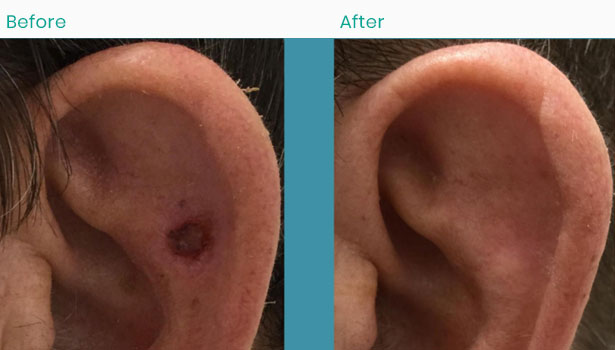
Cheek:
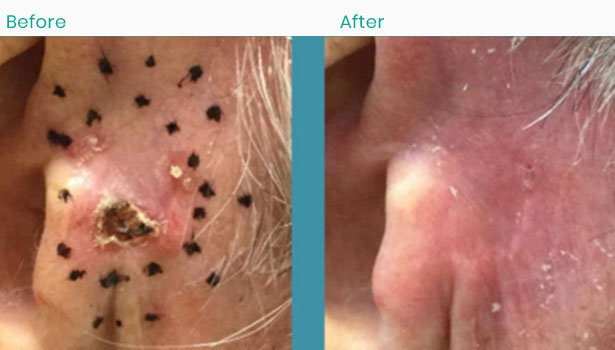
Arm:
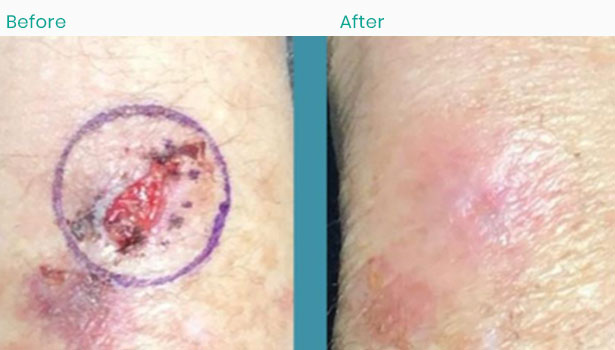
Scalp:
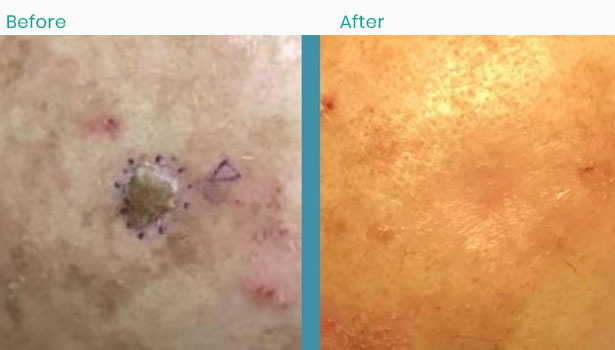
Forehead:
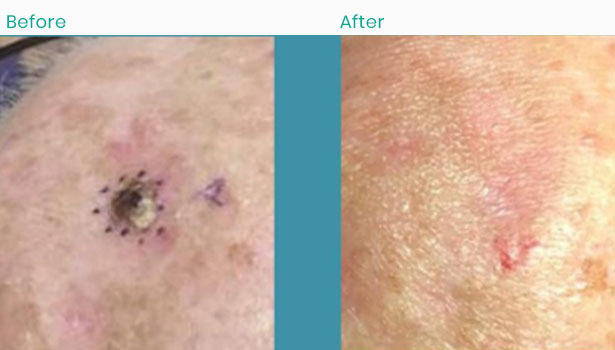
Temple:
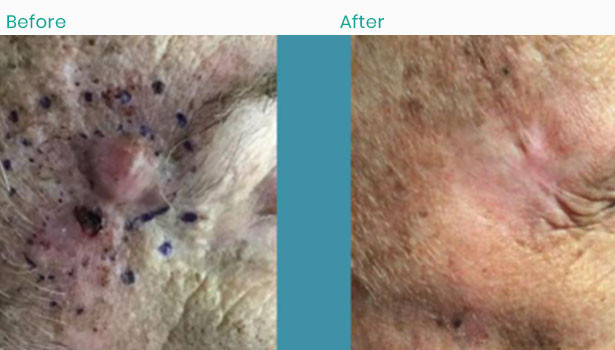
Knee:
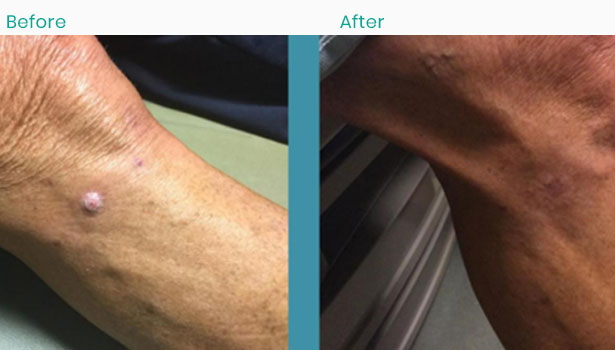
GentleCure (Image-Guided SRT) is covered by Medicare and most health insurance plans
Side effects and cosmetic results
Associated Dermatology Helena is proud to offer the non-surgical, gold-standard for the treatment of nonmelanoma skin cancer
GentleCure (Image-Guided SRT) is a safe and effective, surgery-free treatment for nonmelanoma skin cancers. It is the only skin cancer treatment that is done right in the dermatology office. GentleCure (Image-Guided SRT) is covered by most health insurance plans. Best of all, GentleCure (Image-Guided SRT) is a clinically appropriate treatment option for the majority of people diagnosed with basal cell, squamous cell, and other types of skin cancer.
